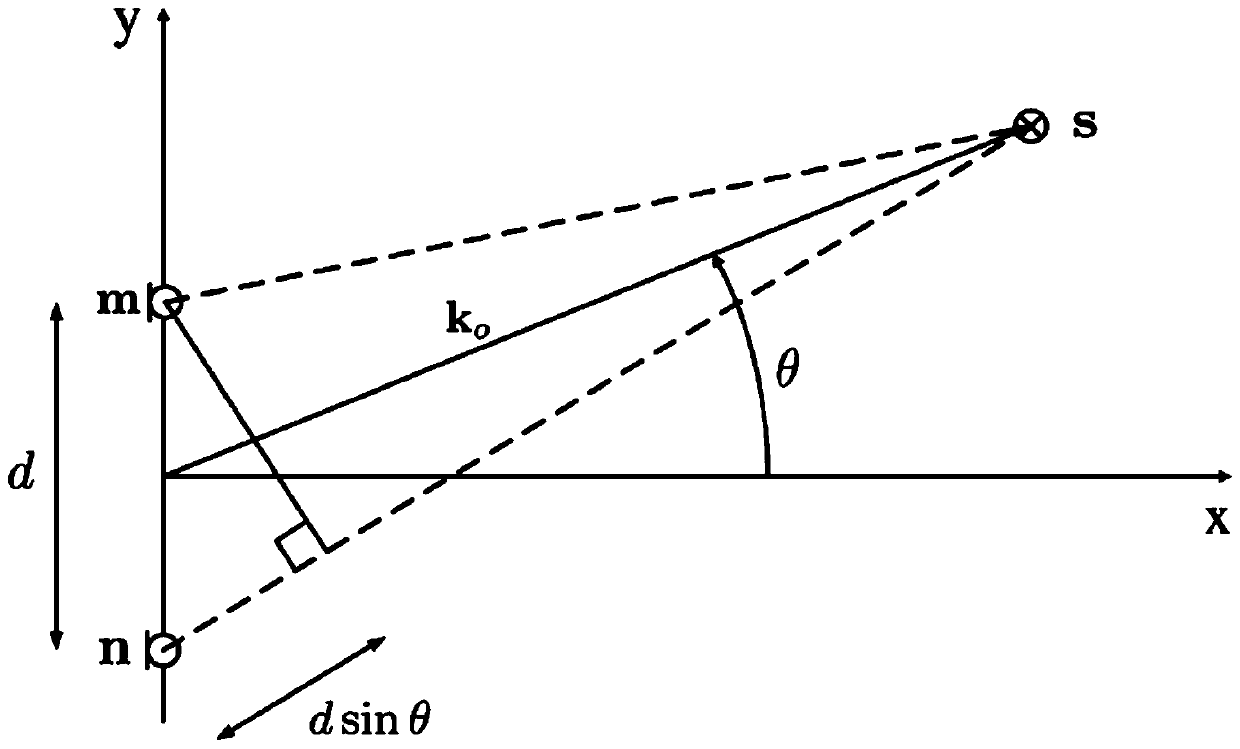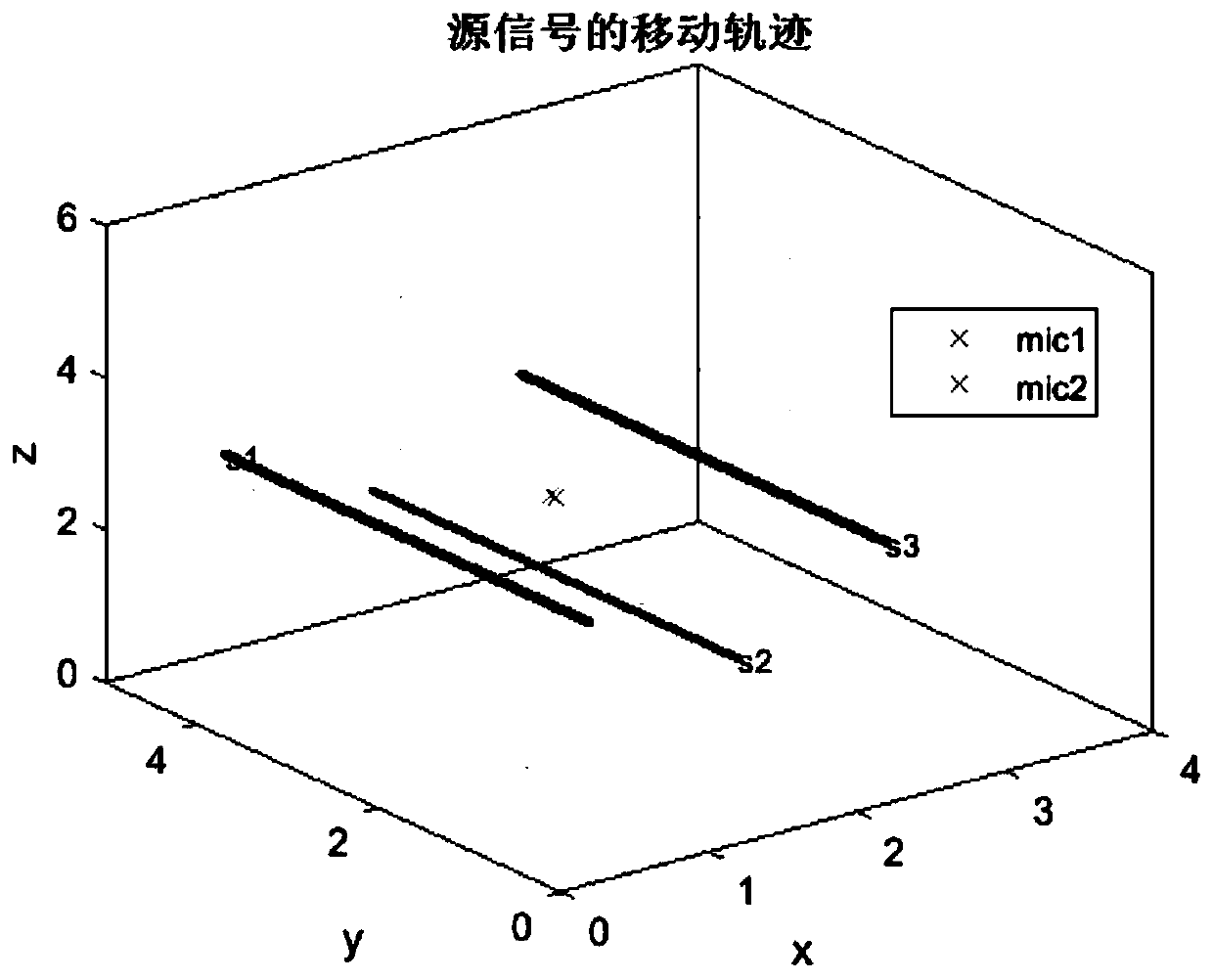Blind separation method for mobile source signal aliasing
A blind separation and source signal technology, applied in the field of blind signal separation, can solve the problems of general effect, difficult blind separation process of aliased signals, non-moving source signal, etc., to achieve good robustness, significant separation effect, and improve separation performance. Effect
- Summary
- Abstract
- Description
- Claims
- Application Information
AI Technical Summary
Problems solved by technology
Method used
Image
Examples
Embodiment 1
[0097] In Embodiment 1, consider the aliasing situation where two microphones receive three moving source signals, the moving traces of the source signals are as follows image 3 As shown, the distance between the two microphones is 5 cm, and the reverberation time is 150 ms; in order to evaluate the performance of blind separation, short-term object intelligibility measurement (STOI) and frequency-weighted segmental signal-to-noise ratio (fwSegSNR) are selected As an evaluation criterion, the experimental results are as follows Figure 4 with Figure 5 As shown, it can be seen that the STOI and fwSegSNR values obtained by the proposed algorithm are better than those obtained by the Full-rank algorithm, indicating that the proposed algorithm of the present invention has better robustness for blind separation of mobile source signal aliasing.
Embodiment 2
[0099] In the second embodiment, the aliasing situation in which three moving source signals are received by two microphones is also considered, and the moving space of the source signals is as follows: image 3 As shown, the distance between the two microphones is 5 cm, and the reverberation time is selected as 200 milliseconds; the experimental results are as follows Image 6 with Figure 7 As shown, from the obtained STOI value and fwSegSNR value, the separation result of the proposed algorithm is still better than the result obtained by the Full-rank algorithm; in addition, comparing the results of Example 1, it can be found that due to the increase of the reverberation time, the separation The result is a decline. Therefore, for a relatively low reverberation time, the algorithm proposed in the present invention has better separation performance for mobile source signal aliasing blind separation.
[0100] The present invention proposes a blind separation method for mobi...
PUM
 Login to View More
Login to View More Abstract
Description
Claims
Application Information
 Login to View More
Login to View More - R&D
- Intellectual Property
- Life Sciences
- Materials
- Tech Scout
- Unparalleled Data Quality
- Higher Quality Content
- 60% Fewer Hallucinations
Browse by: Latest US Patents, China's latest patents, Technical Efficacy Thesaurus, Application Domain, Technology Topic, Popular Technical Reports.
© 2025 PatSnap. All rights reserved.Legal|Privacy policy|Modern Slavery Act Transparency Statement|Sitemap|About US| Contact US: help@patsnap.com



